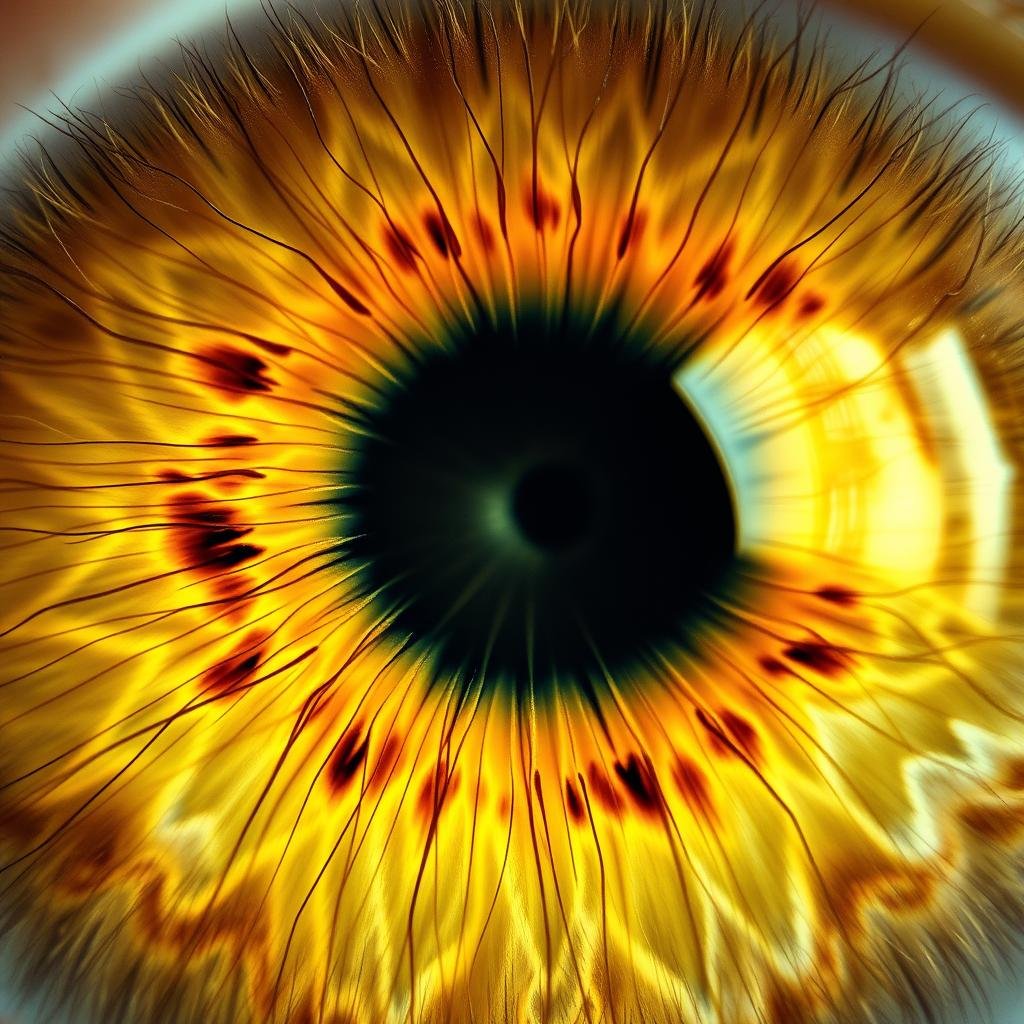Your eyes may reveal more about your health than you realize. The colored part of your eye—the iris—contains intricate patterns that iridologists believe can offer insights into your overall wellbeing. This ancient practice has evolved over centuries, with modern practitioners using specialized charts and techniques to analyze the iris for potential health indicators. But what exactly do these specialists look for, and how do they interpret what they see? Let’s explore the fascinating world of iridology and the work of an iridologista.
The Historical Roots of the Iridologista Prática
Iridologia has a rich history dating back thousands of years. Some evidence suggests that aspects of iris analysis were practiced in ancient Egypt, India, and China. However, modern iridology began taking shape in the 17th century with Philippus Meyeus, who documented correlations between iris markings and health conditions.
The practice gained significant momentum in the 19th century through the work of Hungarian physician Ignatz von Peczely. As a child, von Peczely noticed changes in an owl’s iris after the bird suffered a broken leg. This observation sparked his curiosity, leading him to study how illnesses might affect iris patterns. By 1880, he had created the first comprehensive iris chart.
In the 1950s, Dr. Bernard Jensen further developed these theories, creating the modern iris chart that many iridologists still use today. This evolution has transformed iridology from folk medicine into a structured alternative health practice with specific methodologies and training programs.


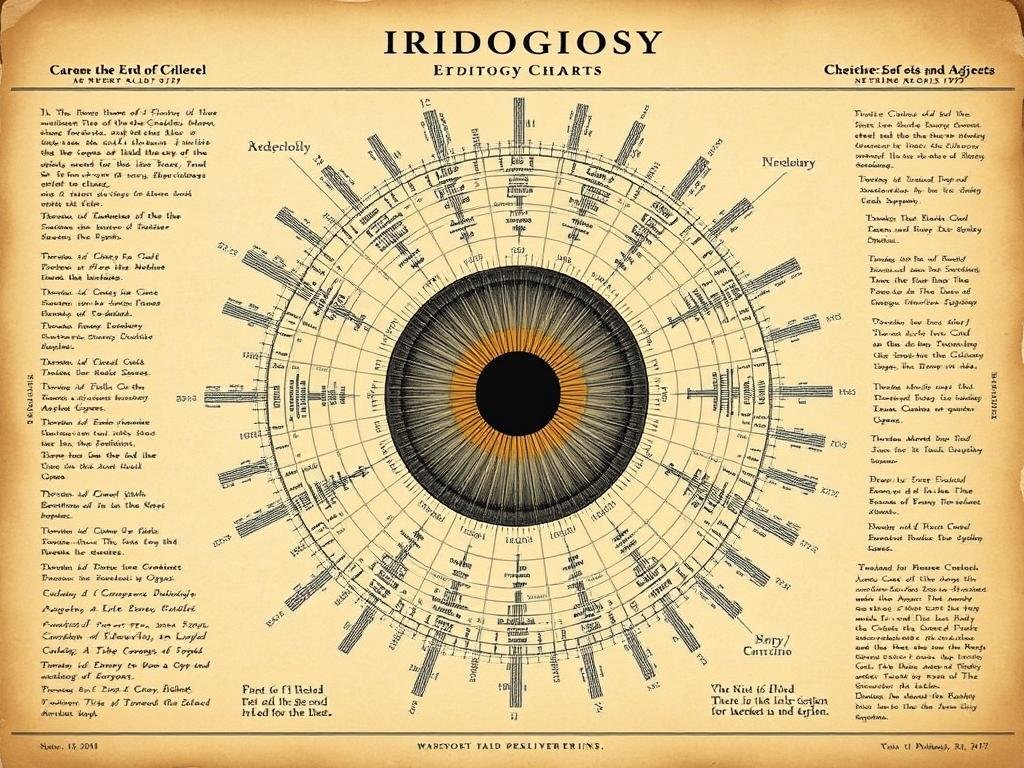
How Iridologists Analyze the Iris
When you visit an iridologista, they conduct a detailed examination of your iris using specialized magnifying equipment. Unlike conventional eye exams that focus on eye health, iridology specifically studies the patterns, colors, and markings within the iris itself. These practitioners believe that the iris connects to every organ and tissue through the nervous system, making it a potential map of the entire body.
Key Markers Iridologists Examine
During an examination, an iridologista looks for several specific features:
- Variações de cores e mudanças de pigmentação
- Structural patterns and fiber arrangements
- Dark spots or flecks (called “lesions”)
- White marks or lines
- Rings or halos around the pupil or iris
- Overall iris color and constitution type
The Iridology Chart: Mapping the Body Through the Eye
Central to the practice is the iridology chart, which divides the iris into approximately 60 sections. Each section corresponds to a different part of the body. For example, the top section of the iris might represent the brain and head, while the lower portions might correspond to the legs and feet.
The right iris typically reflects the right side of the body, while the left iris corresponds to the left side. Using this chart, practitioners can identify which body systems might need attention based on irregularities in specific sections of the iris.

Iris Constitutions: What Your Eye Color Tells an Iridologista
According to iridology, there are three main iris constitutions, each associated with different health tendencies. Understanding your iris type helps practitioners identify which health conditions you might be predisposed to.
Blue Eye (Lymphatic)
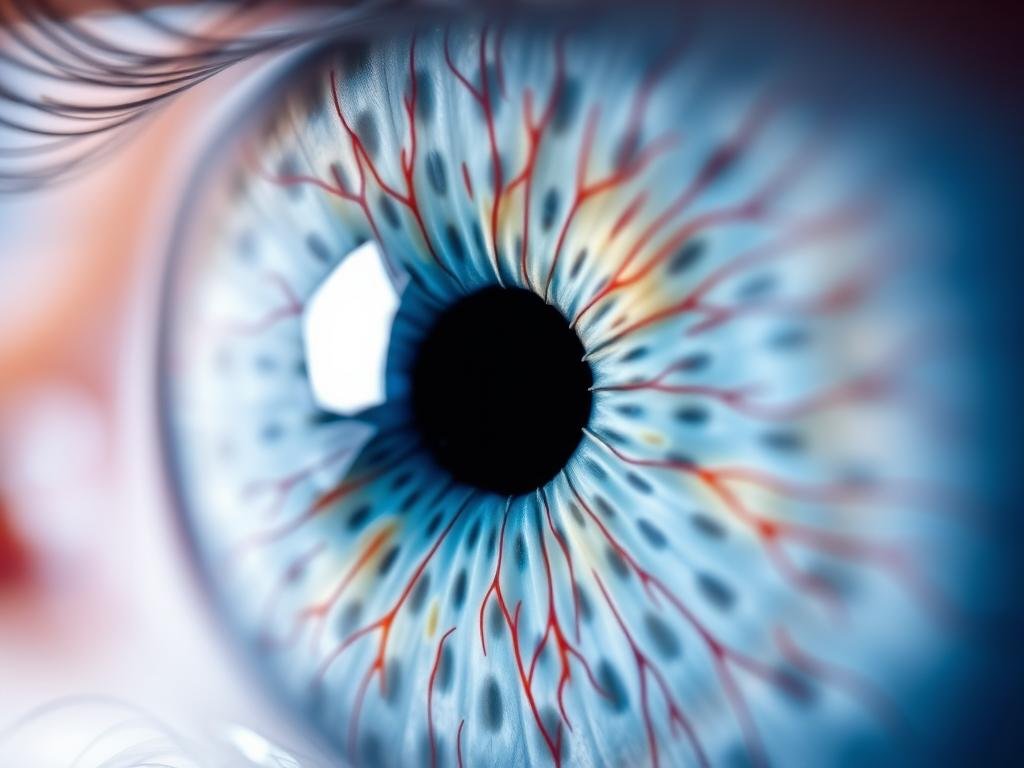
People with blue eyes are considered to have a lymphatic constitution. Iridologists believe these individuals may be more prone to issues affecting the mucous membranes and upper respiratory system. They might experience more frequent colds, allergies, or sinus problems.
Brown Eye (Hematogenic)
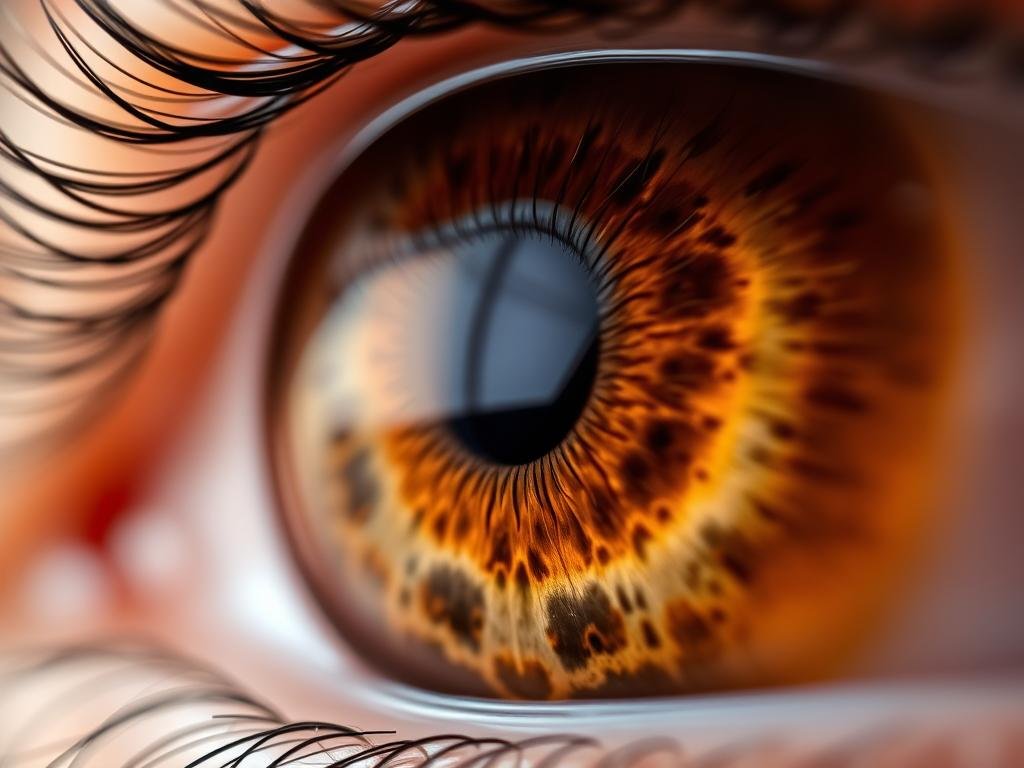
Those with brown eyes have what’s called a hematogenic constitution. According to iridology, these individuals may be more susceptible to blood-related issues and conditions affecting the liver and digestive system. They might need to pay special attention to these areas for optimal health.
Mixed Eye (Biliary)
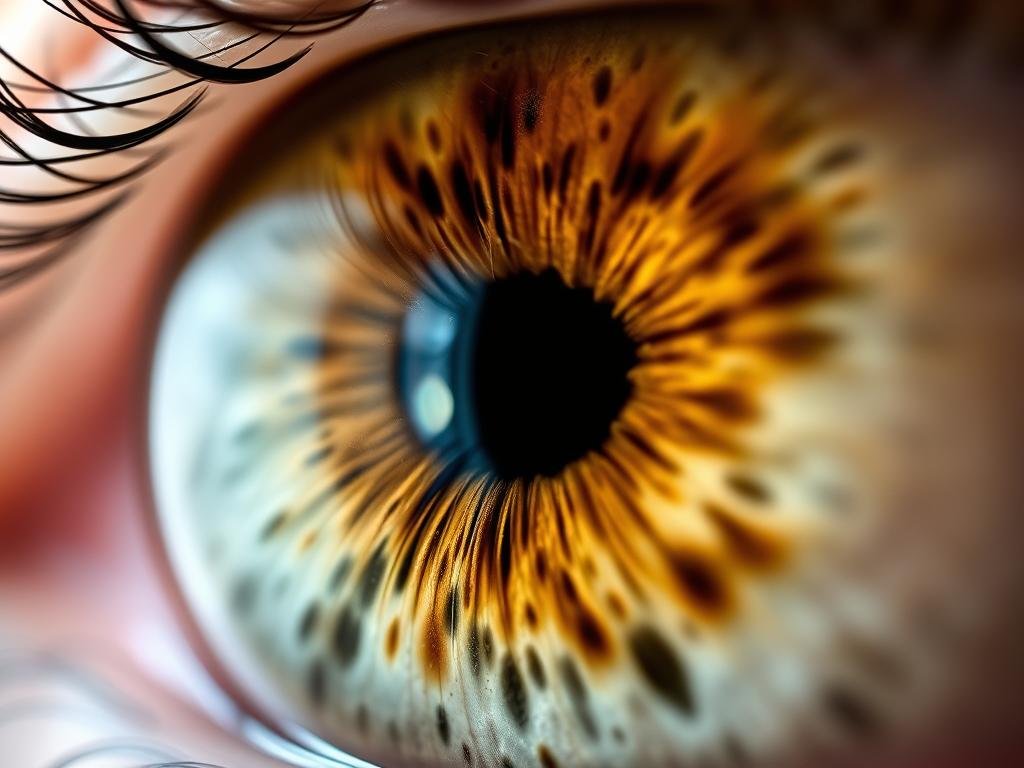
Mixed or “biliary” eyes contain elements of both blue and brown. Iridology suggests these individuals may experience a combination of lymphatic and hematogenic tendencies. They might be particularly prone to digestive issues and should consider being proactive about liver health.
By identifying your constitutional type, an iridologista can provide tailored recommendations for preventative health measures. While these predispositions aren’t guarantees of specific health problems, they can guide wellness strategies.
Iridology Personality Types
Beyond physical health, some iridologists believe that iris patterns can reveal aspects of personality. These personality types are based on the structural arrangement of fibers in the iris rather than color alone.
Stream and Jewel Types
The Stream type shows uniform fiber structure and is associated with grounded, intuitive personalities. These individuals tend to be empathetic and work well with others, often excelling in healthcare or athletic fields.
The Jewel type displays darker-colored dots throughout the iris and suggests an analytical personality. These logical thinkers process information methodically and may excel in teaching, science, or leadership roles.
Flower and Shaker Types
The Flower type features rounded openings in a ring pattern, indicating an emotional, creative personality. These expressive individuals often have artistic talents and adaptable natures.
The Shaker type combines aspects of both Jewel and Flower patterns, suggesting dynamic, adventurous personalities. These individuals often embrace change and may be natural innovators.
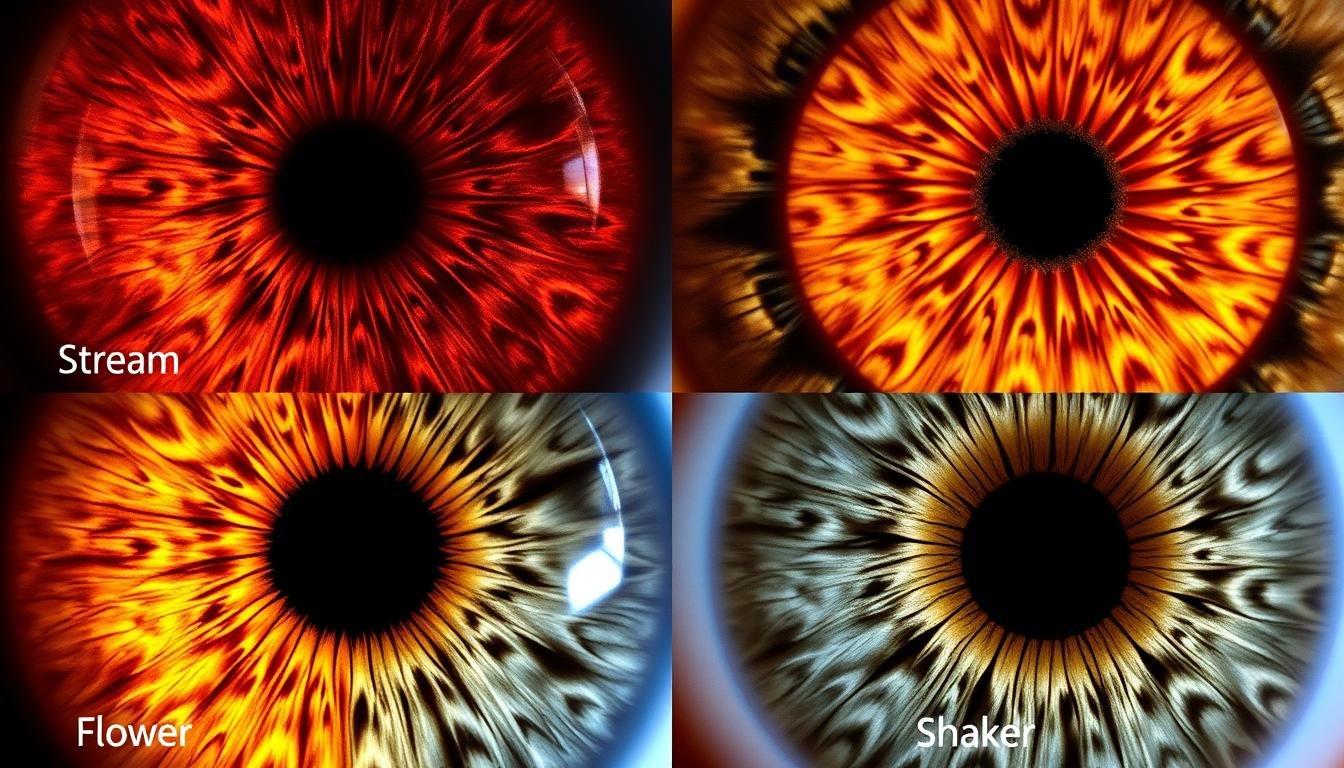
O Iridologista Processo de exame
What happens during an appointment with an iridologista? The process typically follows these steps:
- Initial Consultation: The practitioner takes your health history and discusses current concerns.
- Iris Examination: Using specialized equipment like a penlight and magnifying lens or digital iris camera, they examine both irises in detail.
- Chart Analysis: The practitioner compares your iris patterns to an iridology chart to identify potential areas of concern.
- Documentação: Many modern practitioners take photographs of your irises for detailed analysis and future comparison.
- Health Assessment: Based on their findings, they provide an assessment of potential health strengths and weaknesses.
- Recommendations: The session typically concludes with lifestyle, dietary, or supplement recommendations.
Experience an Iridology Session
Curious about what your iris might reveal? Schedule a consultation with a certified iridologist to discover potential insights about your health.
Reserve uma consulta

Perspectivas científicas sobre iridologia
While iridology has many dedicated practitioners and followers, it’s important to understand how the conventional medical community views this practice.
Benefícios potenciais
- Non-invasive examination method
- Pode incentivar medidas preventivas de saúde
- Holistic approach to health assessment
- Can complement conventional medical care
- May identify areas for lifestyle improvement
Limitações e críticas
- Limited scientific evidence supporting claims
- Not recognized by conventional medical institutions
- Clinical studies have not consistently validated its effectiveness
- Should not replace medical diagnosis
- Results can vary between practitioners
Most medical doctors and researchers point to a lack of controlled studies validating iridology’s diagnostic accuracy. Several studies have tested whether iridologists could identify patients with specific diseases by examining their irises, with results generally not supporting iridology’s claims.
However, proponents argue that iridology is not meant to diagnose specific diseases but rather to identify areas of weakness or stress in the body. They view it as a complementary tool rather than a replacement for conventional medicine.
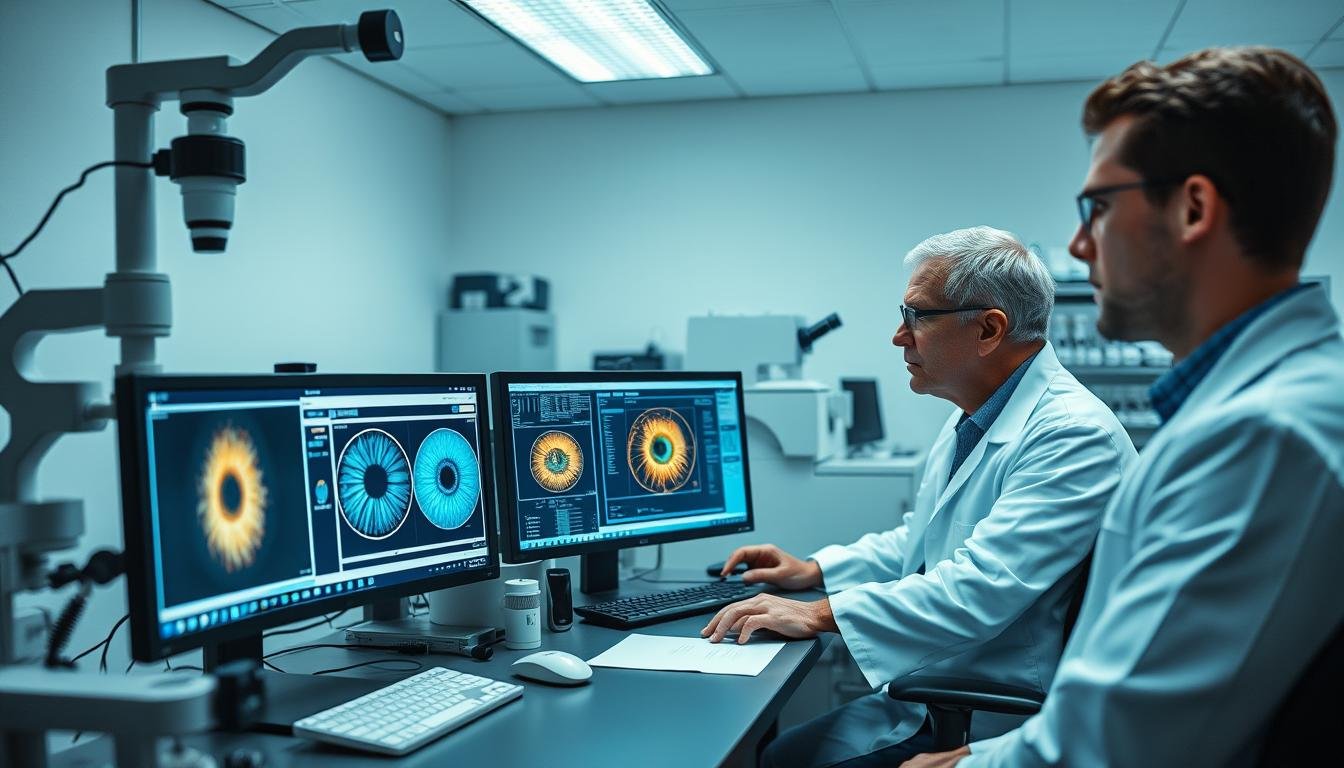
Case Studies: Iridologista Findings
While scientific validation remains limited, many practitioners share case studies where iridology has provided valuable insights. These anecdotal examples illustrate how practitioners apply iridology principles in practice.
Case Study: Digestive Health

A client came in with unexplained digestive discomfort that conventional tests hadn’t resolved. The iridologista noted specific markings in the digestive zone of the iris, suggesting potential inflammation. After following recommendations for dietary changes and specific herbs, the client reported significant improvement in symptoms.
While this doesn’t prove causation, it represents the type of case that practitioners often cite as evidence of iridology’s potential value.
Case Study: Stress Patterns
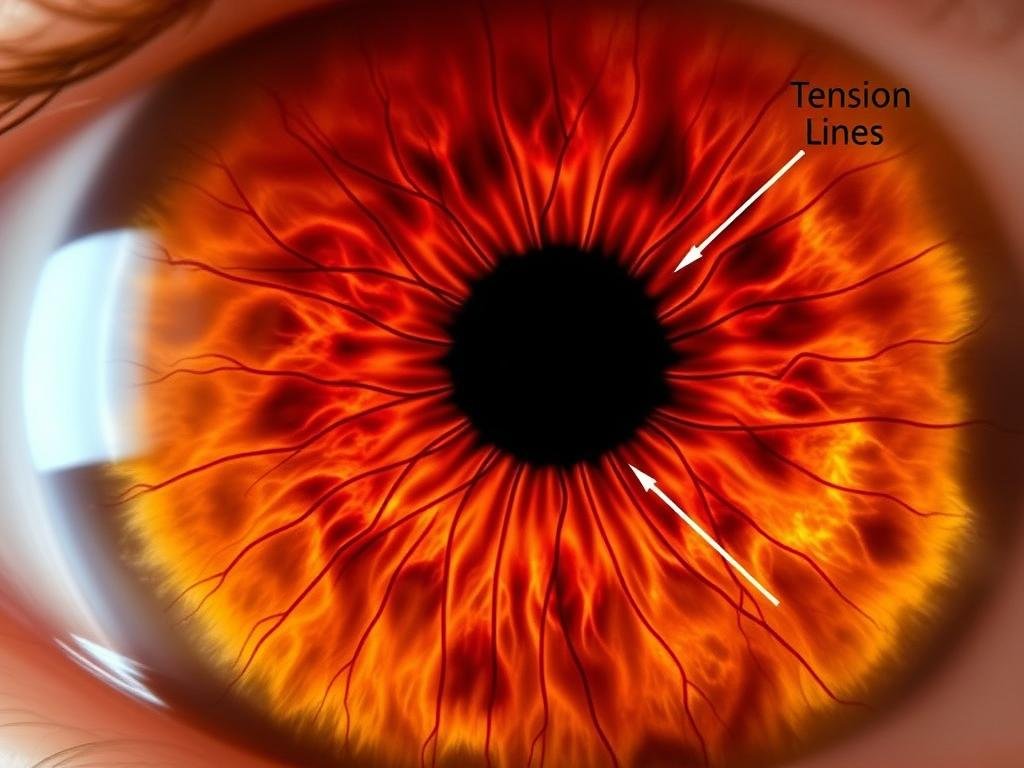
Another case involved a client with chronic fatigue. The iridology examination revealed what practitioners call “stress rings” throughout the iris. After implementing stress management techniques and adrenal support supplements recommended by the iridologista, the client experienced improved energy levels over several months.
These cases highlight how practitioners use iridology as part of a holistic approach to wellness rather than as a diagnostic tool for specific diseases.
Learning Iridology: Becoming an Iridologista
For those interested in pursuing iridology as a career or adding it to their existing health practice, several educational pathways exist. Training typically covers iris anatomy, chart interpretation, case analysis, and practical examination techniques.
Key Areas of Study
- History and theoretical foundations of iridology
- Anatomia dos olhos e íris
- Detailed study of iridology charts and mapping
- Constitutional types and their health implications
- Examination techniques and equipment
- Case analysis and practical applications
- Complementary holistic health approaches
Start Your Journey in Iridology
Interested in learning more about iridology? Our comprehensive online course provides all the tools and knowledge you need to begin practicing this fascinating holistic health method.
Explore Iridology Courses
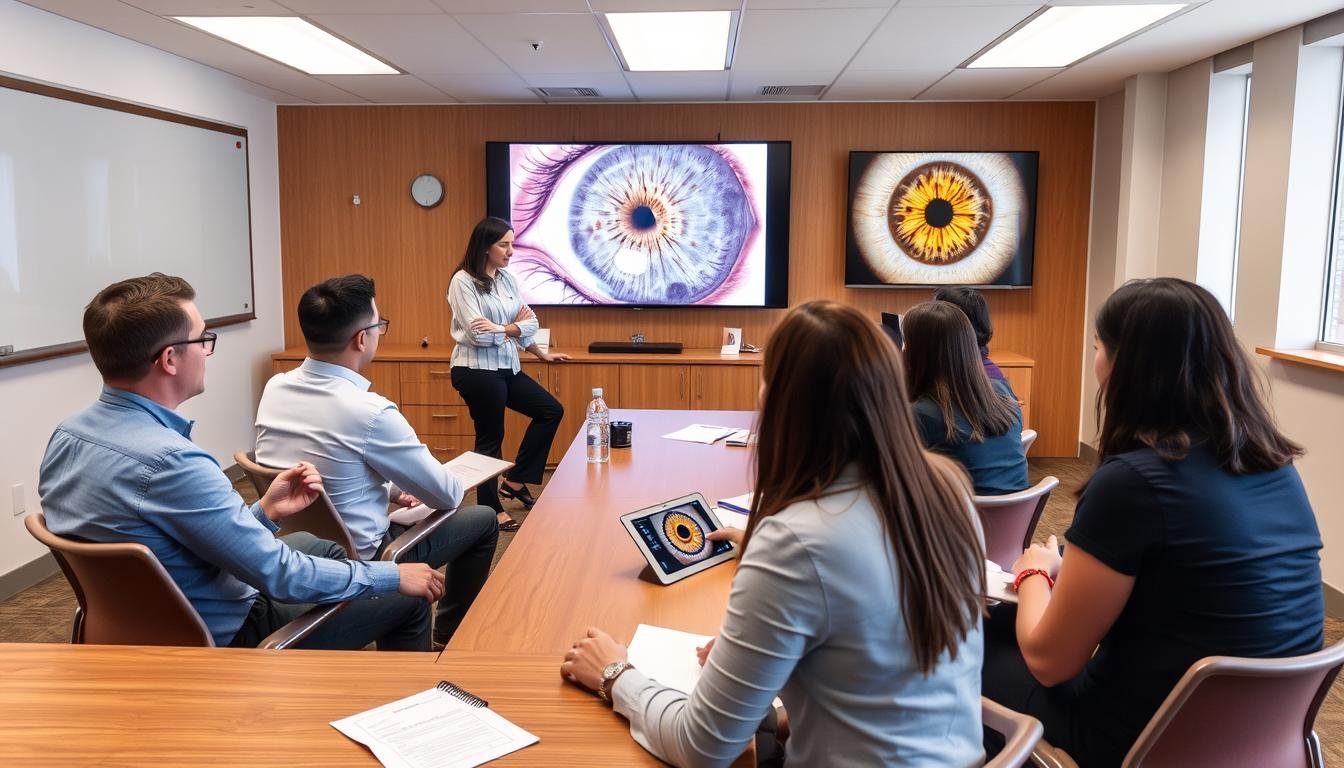
Integrating Iridology into Your Health Journey
Whether you’re considering consulting an iridologista or simply curious about what your eyes might reveal, it’s important to approach iridology with an informed perspective. While not a replacement for conventional medical care, many find value in the holistic insights this practice can offer.
The most balanced approach is to view iridology as one tool among many for exploring your health. Consider it a complementary practice that might provide additional perspectives on your wellbeing, while still maintaining regular check-ups with medical professionals.
If you decide to explore iridology, seek out qualified practitioners with proper training and a balanced approach that acknowledges both the potential benefits and limitations of this fascinating practice.

















